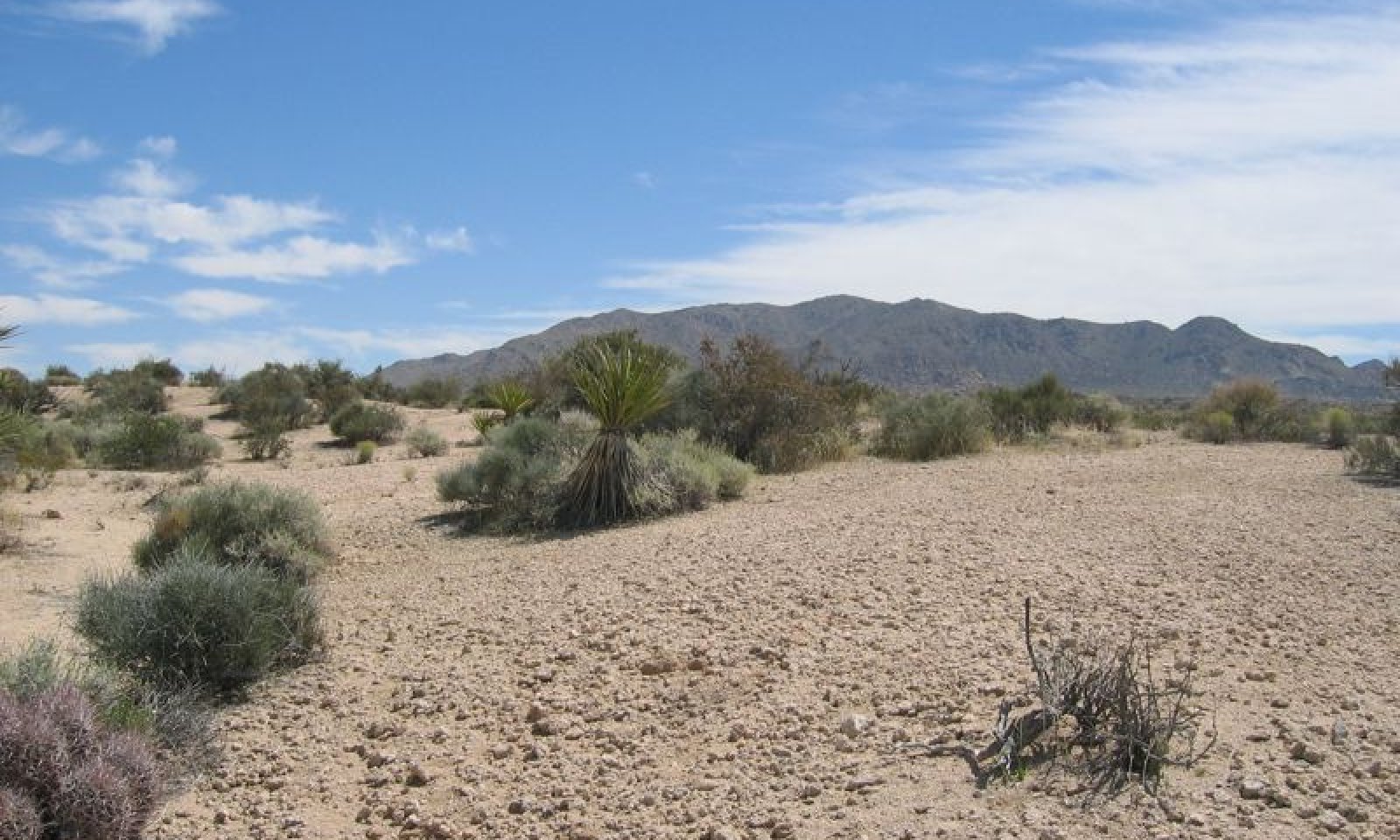
Very Shallow Duripan Fan Remnants
Scenario model
Current ecosystem state
Select a state
Management practices/drivers
Select a transition or restoration pathway
- Transition 1 More details
- Transition 2 More details
-
No transition or restoration pathway between the selected states has been described
Target ecosystem state
Select a state
Description
State 1 represents the historic range of variability for this ecological site. This state no longer exists due to the ubiquitous naturalization of non-native species in the Mojave Desert. Periodic drought and rare fire were the natural disturbances influencing this ecological site. Fire would have been a very rare occurrence due to the lack of a continuous fine fuel layer between shrubs (Brown and Minnich 1986, Brooks et al. 2007).
Data for this State does not exist, but dynamics and composition would have been similar to State 2, except with only native species present. See State 2 narrative for more detailed information.
Description
State 2 represents the current range of variability for this site. Non-native annuals, including Mediterranean grass, red brome, Asian mustard and red-stem stork’s bill (Erodium cicutarium) are naturalized in this plant community. Their abundance varies with precipitation, but they are at least sparsely present (as current year’s growth or present in the soil seedbank).
Submodel
Description
This state has been significantly altered from the natural range of variability found in States 1 and 2. Initially soil disturbance increases the susceptibility of this site to invasion by Asian mustard, redstem stork’s bill, Mediterranean grass, and red brome. With further disturbance and drought, this state could experience severe soil erosion. With a lack of protective surface fragments, erosion may remove very shallow, noncemented soil horizons, and vegetative cover may be restricted to depressions and remnant margins.
We do not have data for this state.
Mechanism
This transition occurred with the naturalization of non-native species in this ecological site. Non-native species were introduced with settlement of the Mojave Desert region in the 1860s.
Model keys
Briefcase
Add ecological sites and Major Land Resource Areas to your briefcase by clicking on the briefcase (![]() ) icon wherever it occurs. Drag and drop items to reorder. Cookies are used to store briefcase items between browsing sessions. Because of this, the number of items that can be added to your briefcase is limited, and briefcase items added on one device and browser cannot be accessed from another device or browser. Users who do not wish to place cookies on their devices should not use the briefcase tool. Briefcase cookies serve no other purpose than described here and are deleted whenever browsing history is cleared.
) icon wherever it occurs. Drag and drop items to reorder. Cookies are used to store briefcase items between browsing sessions. Because of this, the number of items that can be added to your briefcase is limited, and briefcase items added on one device and browser cannot be accessed from another device or browser. Users who do not wish to place cookies on their devices should not use the briefcase tool. Briefcase cookies serve no other purpose than described here and are deleted whenever browsing history is cleared.
Ecological sites
Major Land Resource Areas
The Ecosystem Dynamics Interpretive Tool is an information system framework developed by the USDA-ARS Jornada Experimental Range, USDA Natural Resources Conservation Service, and New Mexico State University.


